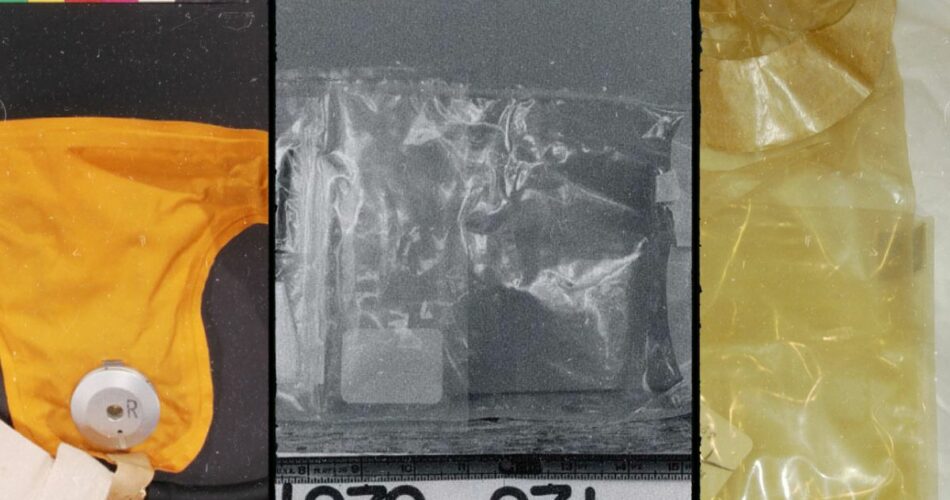How they coped with the need to go to the toilet without having one
The lives of Apollo astronauts were challenging while aboard the command and service module. The limited space and zero-gravity environment made it a vastly different experience from living on Earth. As per the Smithsonian National Air and Space Museum’s website, astronauts had to alter their daily habits, such as eating, drinking, dressing, and even using the restroom.
Andy Burns, a Student of Space History and Flight Officer/Aviator at the United States Navy (USN), explains this on Quora.
“There were no showering/bathing facilities aboard any of the Apollo spacecraft. What washing the astronauts were able to do was via wet washcloths every now and then. The environmental control system circulated air and helped somewhat, but mostly it was just a matter of the whole crew stinking equally and eventually going nose-deaf”.
The first long-duration NASA mission was Gemini 5. Gordon Cooper and Pete Conrad tested the fuel cells in their spacecraft for eight days in orbit in August 1965 to make sure the new technology would hold up for at least the length of a voyage to the Moon but they had four bowel movements between the two astronauts during the voyage.
When the space era first began, waste management was somewhat of an afterthought. On May 5, 1961, astronaut Al Shepard famously wet himself while waiting for his Redstone to launch. He would undoubtedly be able to maintain it for a quarter of an hour because the mission was only supposed to last fifteen minutes. Shepard had been locked in his Freedom 7 spacecraft for hours prior to the brief mission, which was a situation that NASA had not anticipated. Shepard was compelled to urinate in his suit because there was no urine-collecting device on board and no way to remove him from the spaceship without considerably delaying the launch. Therefore, he remained motionless until the liquid in the suit’s cooling system drained.
Urine collection improved only after Freedom 7. The waste was easy to eject from the side of the spacecraft because it was a liquid and could be stored by the astronauts in straightforward bags, but containing feces was a different issue.
Even though astronauts were on low-residue diets intended to reduce bowel movements, for the length of the voyage they had to keep their filled defecation devices inside the spacecraft.


So, how did the Apollo astronauts poop while they were traveling to the Moon?
With extreme caution. They got as far away from their crewmates as they could while completely undressed and without access to a shower or washing machine. Then they performed the tasks while wearing a bag on their butt that had a ring attached to it using glue. They had to then put their finger into a covered hole, assuming it was firm, to break it off. (There was no fall due to gravity).
To make matters worse, they had to mix a specific liquid that destroyed bacteria into the poop before sealing the bag and kneading the contents to properly incorporate it.


Julie Ritt, an expert in NASA history, says on Quora;
“That’s assuming that they managed to get the bag attached to their bootie before anything exited the premises”.
Curiously, the crew of Apollo 10 (John Young, Thomas Stafford, and Gene Cernan) experienced problems with unidentified feces floating in the cabin. But no one would claim responsibility for the feces.
“Oh — Who did it?” Tom Stafford asks at one point. Confused, Young and Cernan reply, “Who did what?”
Cernan: “Where did that come from?”
Stafford: “Get me a napkin quick. There’s a turd floating through the air”.
Young: “I didn’t do it. It ain’t one of mine”.
Cernan: “I don’t think it’s one of mine”.
Stafford: “Mine was a little more sticky than that. Throw that away”.
Young: “God Almighty”.
(laughter)
Later on, they were interrupted again:
Cernan: “Here’s another goddam turd. What’s the matter with you guys? Here, give me a —”
(laughter from Young and Stafford)
Stafford: “It was just floating around?”
Cernan: “Yes”.
Stafford (laughing): “Mine was stickier than that”.
Young: “Mine was too. It hit that bag —”
Cernan: “I don’t know whose that is. I can neither claim it nor disclaim it (laughter)”.
Young: “What the hell is going on here?”
Burns goes on to explain;
“According to the reports of the Navy rescue swimmers who were responsible for opening the spacecraft hatch after splashdown, the sheer stink of an Apollo cabin after two weeks was awe-inspiring”.
The infrastructure has greatly improved to reassure any potential astronauts who may be second-guessing their career choice. They now have a proper bathroom, and even a camera is included so they can practice their aim.
Photo by NASA
